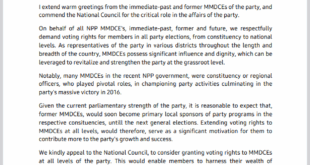In the early 1960’s, Queen Elizabeth II, on her visit to Kumasi, one of the oldest-existing cities in sub-Saharan Africa, described it as the ‘Garden City of West Africa’.
The accolade was apt for the traditional city, which reportedly was adorned in rich fauna and flora, some of the species rarely seen in the Region.
The plentiful diverse tree species lined some principal streets, including that of Bantama, Ahodwo, Amakom, Ash-Town, K.O. and Nhyiaeso. A sight to behold, they provided the good ecosystem the city enjoyed in those years.
According to environmental scientists, the thriving ecology and biodiversity included clean water bodies, which run through Ghana’s second-largest city.
They included ‘Subin’, ‘Dichem’, ‘Kwada’, ‘Susan’, ‘Wewe’, amongst others.
These unpolluted rivers and streams, they said, sustained aquatic life generally.
“Kumasi could boast of one of the best climatic conditions on the African continent and this environment also promoted eco-tourism,” Mr. Osei Assibey-Antwi, the Mayor, tells the Ghana News Agency (GNA).
The Mayor, who has since assumption of office, introduced some novelty environmental programmes such as ‘Keep Kumasi Clean and Green (KKCG)’, has blamed urbanization, infrastructural development, the lukewarm attitude of some residents towards environmental issues, among other factors, for the deteriorating ecosystem.
“We need all hands on board to make up for what has been lost over the years,” he rallies.
In recent times, the Asantehene, Otumfuo Osei Tutu II, has been echoing the importance of environmental preservation as he leads efforts to restore to Kumasi its status as the ‘Garden City of West Africa’.
“It is our inalienable right to protect what nature has bequeathed us,” he told the Minister of Lands and Natural Resources, Mr. Samuel Abu Jinapor, on the latter’s recent visit to the Manhyia Palace.
The Asantehene worried at the wanton destruction of the ecosystem, is gearing to reinforce the campaign to conserve nature as he formally plants a symbolic tree on Friday, June 11, in support of the Government’s ‘Green Ghana Project’.
The Project, officially commencing nationwide, would see all 43 Metropolitan, Municipal and District Assemblies (MMDAs) in the Ashanti Region advancing the noble cause with respective tree-planting exercises.
The various Members of Parliament (MPs), District Chief Executives (DCEs), traditional authorities and other key personalities are billed to plant symbolic trees in support of the initiative.
Mr. Bannor Duodu, Urban Forestry Coordinator for Greater Kumasi, which comprises Kwadaso, Asokwa, Oforikrom, Old-Tafo, Suame and Asokore-Mampong, tells the GNA that more than 200,000 varied tree seedlings would be planted in these areas.
They range from coconut, royal palm, guava, teak, ‘mahogany’ to ‘militia’.
The Urban Forestry Coordinator bemoans how many tree species, such as the ‘neem’ tree, which contains medicinal properties, have been felled over the years with the related negative consequences on the environment.
“When the last tree dies, the last man dies,” he reiterates.
According to the environmental scientist, the ‘Green Ghana Project’ ought to be embraced by all stakeholders given the importance of trees in combating climate change and other life threatening environmental challenges.
Source: GNA
Disclaimer: MyGhanaMedia is not responsible for this report and its content.There are four types of content published on MyGhanaMedia daily: curated content; syndicated content; user-generated content; and original content.
Send your news stories to myghanamedia@gmail.com and Chat with us via WhatsApp on +233200818719
 MYGHANAMEDIA.COM Best Source Of Latest News
MYGHANAMEDIA.COM Best Source Of Latest News




